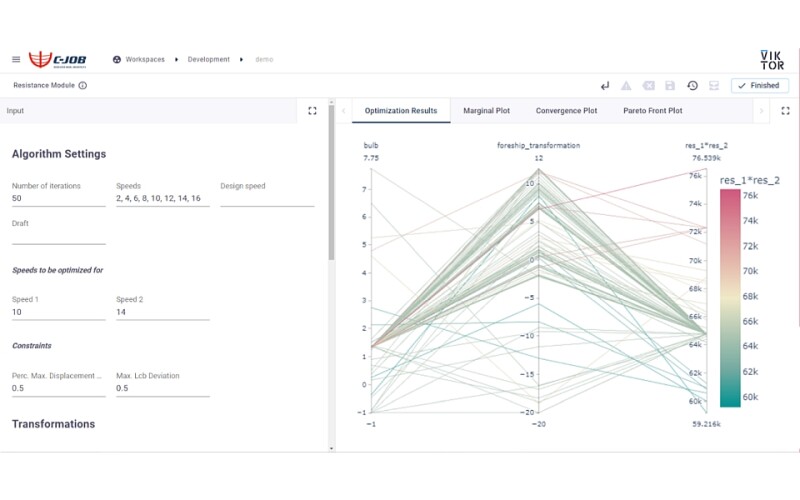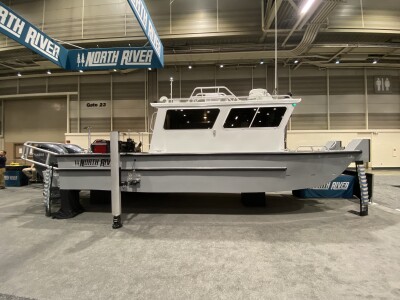Close collaboration between C-Job Naval Architects and Viktor has led to the development of a new ship design tool that cuts lead time in half, the companies say.
The ACD resistance module was launched last month and is a user-friendly interface that optimizes the design of a ship’s hull.
Roy de Winter, R&D engineer at C-Job, said incorporating data analytics into the initial phases of design is more important than ever due to heightened sustainability concerns and economic pressure. Doing so has enabled more autonomous capabilities further down the ship design process.
“We were able to create a tool, the ACD resistance module, that automates this process and reduces building and operational costs,” he said in a post on C-Job.com. This new tool reduces the chance of having to make later design changes “almost to zero.”
In Figure 1, each line represents one iteration of the design, and each vertical axis represents an objective. The color indicates the amount of resistance. Green lines signify low resistance; red lines signify high resistance. Therefore, this graph can be used to interpret which variables should produce an optimal ship design.
The in-house algorithms developed by C-Job provided the foundation for Viktor’s software engineers to build upon. Together they co-developed the useable tool with a high-level programming language called Python. These algorithms allow for complex design problems to be optimized in significantly less time, saving on engineering costs with fewer iterations.
The ACD resistance module will lessen capital expenditures through shorter lead times and uniformity in the building process. C-Job said. Shipowners should also see lower operational costs, as less fuel is required for ships that can sail more efficiently. This tool creates a ship design that ensures the highest quality design is delivered in the shortest amount of time, according to the companies.
Total hull resistance is calculated based on multiple forms of resistance. These forms of resistance can include wave making, friction, separation, air-wind, and appendage resistance. In both figures, draft and weight are also considered when simulating these effects.
Digitization is quickly integrating itself into the shipbuilding industry. Darren Guillory’s recent article noting the need for organizations to shift to a “data-centric workflow” is reinforced by developments like the ACD resistance module.
In a recent discussion with writer Michael Fabey, who spent years investigating Newport News Shipyard, he mentioned the cross-generational collaboration with the implementation of new technology. “It goes against the whole grain that robots are going to be replacing these jobs," he said. "They haven’t been replacing jobs, they’ve been augmenting jobs. The marrying of the old to new is really exciting to watch.”





